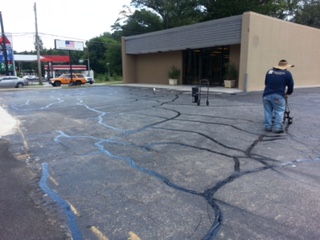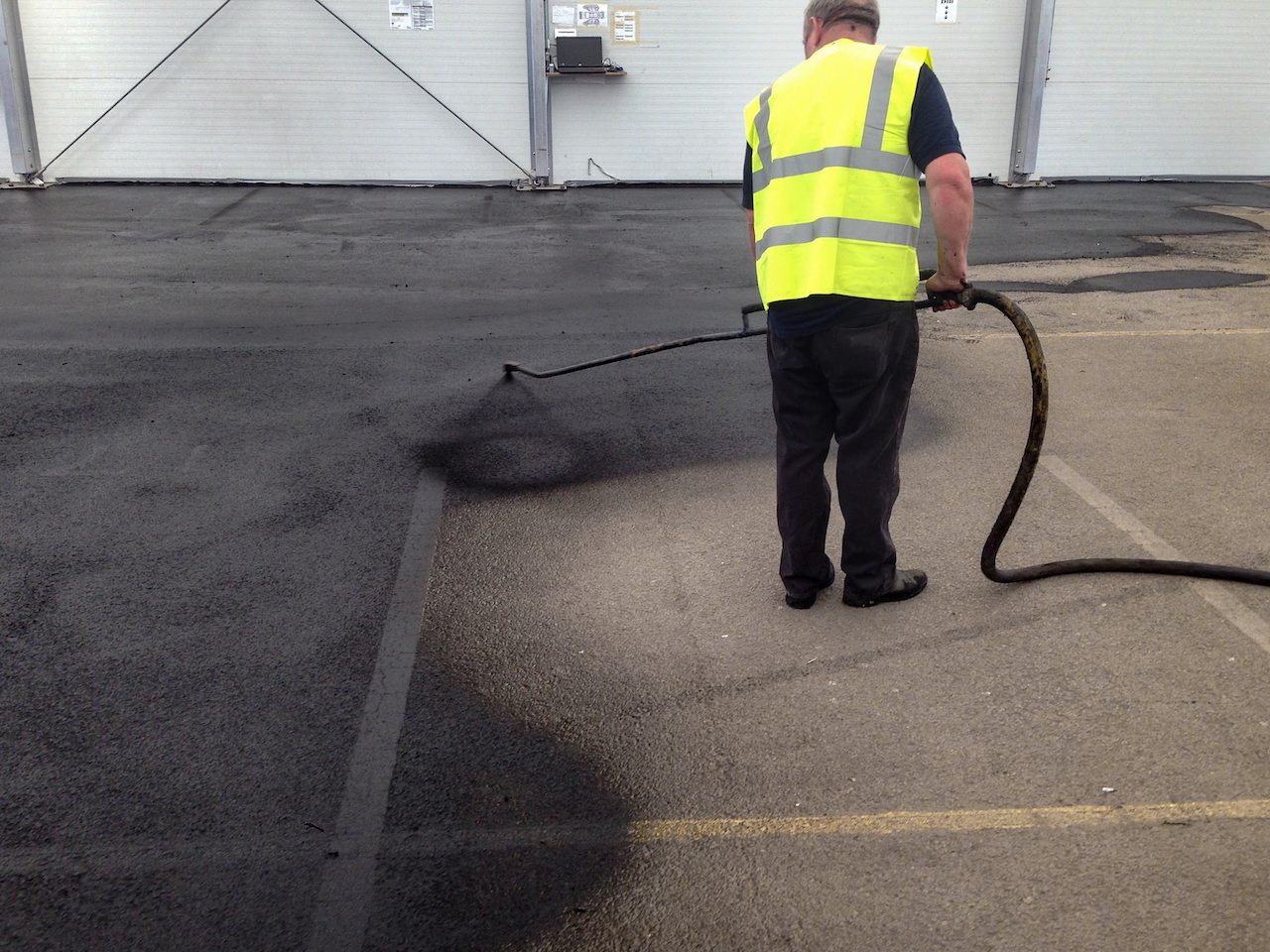
Asphalt Repair & Preparation
Potholes pose a serious risk to the longevity of your asphalt pavement, but they are also a hazard to anyone driving or walking on your pavement. Typically, the best way to repair a pothole is the remove-and-replace method.
• The contractor or one of his crew members will use chalk to enclose the damaged area within a square or rectangle. It is usually necessary to make the enclosure slightly larger than the actual pothole and remove a few inches of good pavement.
• The marked area will be cut with a saw and all layers of asphalt will be removed.
• Dirt, chunks of asphalt or other debris will be removed and the sides of the pavement surrounding the hole will be cleaned and dried. It is important that moisture is eliminated as it will prevent the formation of a strong bond between the new asphalt and the existing pavement. Hot air is typically blown into the hole to ensure proper drying.
• It is often beneficial to apply a tack coat to the bottom and sides of the hole to enhance the bond. Your contractor will have options for the tack material, including asphalt cement, emulsified asphalt and cut-back asphalt.
• As soon as the hole has been cleaned and dried and the tack coat has been applied, new asphalt should be installed. Hot-mix asphalt is the preferred choice; it should be installed in courses and each course compacted before the next one is installed.
• The last step is typically to seal the edges to guard against water penetration. Chip seal is commonly used for edge sealing.
Cracks
Timely repairs of cracks can help prevent the formation of potholes as well as other types of severe damage. Because there are many different types of cracks, it is difficult to provide more than a rudimentary review of the preparation process.
• If grass and weeds have taken root in the crack, they must be removed.
• The crack is cleaned with a wire brush, compressed air or heat lance.
• It may be necessary to use a router to widen the crack a little to create a smooth, clean reservoir for the repair material.
• Repair material must be applied as soon as the crack has been cleaned and dried. Delays allow moisture and dirt to return, impairing the bond between the filler and the existing pavement. Several options are available for the filler, including mastics, rubber-modified asphalt materials and cold-pour materials. Typically, the fillers that are applied while hot are considered to be better as they tend to provide a longer life.
Whether your pavement is suffering from potholes or cracks, you can count on the professionals at MH Greeson Paving for quality repairs. MH Greeson Paving is an asphalt contractor and specialize in asphalt maintenance and repairs and offer a wide range of services, including asphalt sealcoating, crack repair, asphalt overlays, asphalt repair, parking lot striping, asphalt paving and the installation of bollards and traffic signs. We have built our reputation on the quality of our work, our high level of customer service and our affordable prices. For a free quote, submit our online form or call (770) 335-2983.




